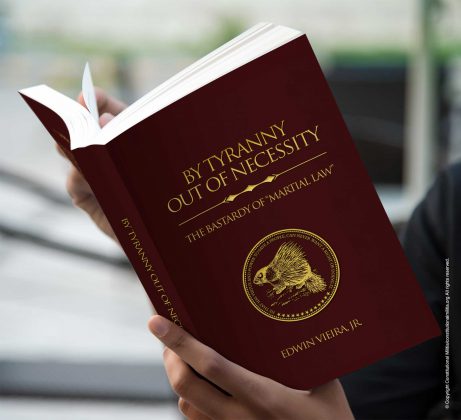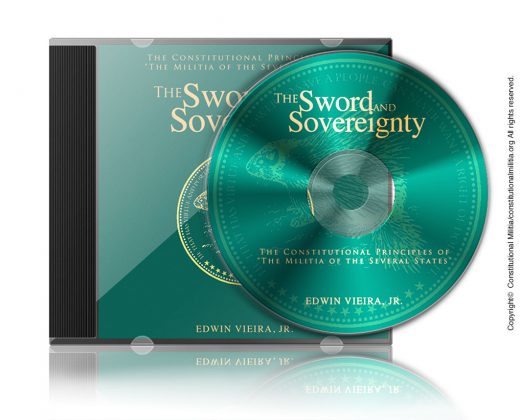Last Updated on November 5, 2021 by Constitutional Militia
Normally, I refrain from commenting on articles by other contributors to NewsWithViews. But Frosty Wooldridge’s recent column—“Call for Mandatory National Service for All American Youth”—provides a valuable “teaching moment” which cannot be allowed to slip away. (To be fair to Mr. Wooldridge, many others—on both the “right” and the “left” of this country’s political spectrum—also are calling for some sort of “mandatory national service”. But, being published at NewsWithViews, his article provides the most accessible example.)
In his column, Mr. Wooldridge proposes the following:
In order to give America’s youth a head start on their lives and help them to figure out what line of work interests them, we need to incorporate a two-year mandatory service in either the military’s five branches of Marine Corps, Navy, Army, Air Force and Coast Guard, or civilian work in Ameri-Corps. Every red-blooded American at the age of 18 must enlist in the miliary or civilian work corps. If they opt for college, they must enter the military or civilian work corp immediately after college for two years.
They could fulfill their national commitment in a combat arms if they feel like a warrior. Or, if they lack the tenacity of combat arms, it takes 10 support personnel in supply, food, hospital, mechanics, etc. to facilitate that combat troop, but could still employ the discipline of serving in the military.
In the military, they learn job skills, duty, honor, country. They learn to respect our flag and our country. They learn how to conduct themselves in a free country.
Now, I agree with everything in Mr. Wooldridge’s column which appears both before and after this quotation—but with little in it. Rather, I submit that what he calls a “national commitment” not only is unnecessary—if the Constitution were properly enforced—but also would prove to be a dangerous departure from the principles and practices of “a free country” which every patriotic American (Mr. Wooldridge included) wants to uphold.
Basically, Mr. Wooldridge advocates a compulsory “draft” of all of America’s youth into one or another branch of what this country’s Founders would have denoted “the standing army”: namely, the Marine Corps, Navy, Army, and Air Force. (He includes the Coast Guard in his list, which in light of the Coast Guard’s origins and its present location in the Department of Homeland Security is technically incorrect, but which for purposes of argument can be accepted. Peculiarly, though, he does not include the National Guard, which plainly is more closely aligned with the Army and Air Force than is the Coast Guard with the Navy.)
In any event, I could point out simply that the Second Amendment does not maintain that “a standing army supported by an universal draft” is “necessary to the security of a free State”, but instead declares that “[a] well regulated Militia” composed of “the people” exercising their “right * * * to keep and bear Arms” is “necessary” to that end.. Inasmuch as the Army, Navy, Air Force, Marine Corps, and Coast Guard are not “militia” in any way, shape, or form—but in fact and law are the very antitheses of (or at least unrelated to) “well regulated Militia”—the Second Amendment alone should tell anyone all he needs to know about the disconnection between a compulsory “draft” for the regular Armed Forces and “a free country”.
Apparently, however, the Second Amendment—along with Article I, Section 8, Clauses 15 and 16, and Article II, Section 2, Clause 1 of the original Constitution—are not in and of themselves convincing enough, for either Mr. Wooldridge or other Americans now touting an universal “draft” for the regular Armed Forces or some civilian establishment such as Ameri-Corps. So an exposition more detailed than the Constitution provides on its face is needed.
I. A compulsory “national commitment” by this country’s youth in favor of the Armed Forces would in due course make almost every adult a member of one or another branch of “the standing army”—and not only pro tempore for just two years or so (as Mr. Wooldridge supposes). For it should be obvious that the necessary statute, drafted by the type of politicians now in office who dance to the discordant tune of the military-industrial complex, would commit “draftees” to possible (indeed, almost certain) future involuntary service in “the standing army” as at least “ready reserves” after that initial period. This would pour a self-reinforcing concrete foundation for the ultimate total “garrison state”. After a while, as more and more Americans were subjected to this open-ended commitment, the adult population and “the standing army” would become coextensive, the one with the other. To describe this as a classical—and wholly undesirable—“Prussian” outcome would hardly be an exaggeration.
Mr. Wooldridge and others who share his opinion apparently do not discern the danger in such an eventuality. “In the military,” he writes rather hopefully, “draftees” will “learn to respect our flag and our country. They [will] learn how to conduct themselves in a free country.” There are, of course, many ways other than involuntary induction into a “standing army” for Americans to “learn to respect our flag and our country”. Even the public schools could be made to instill such attitudes in their students, if organizations such as the National Education Association were stripped of the abusive powers they exercise under State compulsory public-sector collective bargaining statues. That would be a much simpler and more effective solution than imposing an universal “draft” on young Americans whose minds have already been warped out of shape by the cultural Marxism which infects what passes for secondary and higher “education” in this country.
Moreover, within their own limited spheres of authority, the Armed Forces are—and, in light of their purposes, have to be—the very antitheses of “a free country”. Their structures are based on hierarchical ranks and their operations on strict obedience by inferiors to orders from superiors. In “a free country”, however, “the chain of command” runs “from the bottom up” as much as possible; whereas, in the Armed Forces it runs “from the top down”, exclusively and inexorably.
Compulsory service in the Armed Forces will naturally tend (or at least be used) to inculcate in ignorant and impressionable youth a loyalty to (or at the minimum a disposition to sympathize with) the structures, operations, values, and traditions that make just about every “standing army” what it is. Some of these may be worthy of emulation in civil society. But others are at best necessary evils, which should be strictly confined to the barracks, the parade-ground, or the field of battle.
Most dangerous of all is the invariable practice of a “standing army” relentlessly to drill into its inductees a mind-set which tolerates, accepts, even advocates—and in any event obeys—“martial law”. My book By Tyranny Out of Necessity: The Bastardy of “Martial Law” goes into great detail on the utter incompatibility between “martial law” and the “Republican Form of Government” which Article IV, Section 4 of the Constitution requires the United States to “guarantee to every State in th[e] Union”. This country already suffers from too many ill-educated, ill-advised, or ill-disposed people touting “martial law” and kindred para-miliary police-state arrangements centered in the Departments of Defense and of Homeland Security to want to consign tens of millions of dumbed-down, emotionally immature, and easily manipulable youth to “boot camps” in which they will be indoctrinated in anti-Republican principles, and thus become inured to the imposition of anti-Republican practices on both themselves and their fellow citizens.
II. A “national commitment” to involuntary participation in Ameri-Corps or some equivalent institution would be even more undesirable than an universal “draft” into the regular Armed Forces. For whereas such a “draft” would be tied directly to the limited and generally acceptable purpose of “national defense”, compulsory participation in some ostensibly civilian establishment could be twisted to serve any scheme contemporary politicians might disingenuously promote in aid of their fantastical misconceptions of “the general welfare”. One need not be a priest of the Oracle of Delphi to predict that, in the present political climate, these schemes could—indeed, most likely would—aim at carving ever-expanding fissures into society with the jackhammers of cultural Marxism. At every level, from this country’s elementary and secondary public schools through its colleges and universities, America’s “educational” establishment is already serving that perverse purpose all too well. It would be folly to exacerbate this situation by dragooning America’s youth into two or more years’ worth of involuntary service in some civilian labor-camp, so as to perfect with work what has been so effectively begun with brainwashing.
III. The whole idea of what Mr. Wooldridge styles a “national commitment” is legally unsound. As I explain in Chapter 49 of my book The Sword and Sovereignty, an universal “draft” for “the standing army” is plainly unconstitutional. Such a “draft” for Ameri-Corp (or some equivalent institution) would be even worse. For in Article I, Section 8, Clauses 12 through 14, the Constitution does provide for “Armies” and “a Navy”. But nowhere does it authorize a national scheme of compulsory civilian labor in some “democratic” gulag or laogai. Quite the contrary: The Thirteenth Amendment declares that “no[ ] involuntary servitude, except as a punishment for crime whereof the party shall have been duly convicted, shall exist within the United States, or any place subject to their jurisdiction.”
IV. Moreover, at least on paper, in “the Militia of the several States” the Constitution already provides for compulsory service far less dangerous, far more comprehensive, and far more promotive of true American values than what the advocates of some new “national commitment” propose.
“The Militia of the several States” are obviously less dangerous than a “standing army”, because they are no part of a “standing army”, but instead the constitutional counterweights to it or any other mechanism of oppression aspiring usurpers and tyrants might attempt to employ. See, e.g., The Federalist No. 46 (James Madison).
“The Militia of the several States” are obviously more useful—as well as more lawful—than some jury-rigged “national commitment”.
First, “the Militia of the several States” are based upon the complete, permanent, and competent organization of the entire community, starting with enrollment at sixteen years of age and continuing for the full active life of every eligible citizen. See, e.g., Chapters 35 and 36 in The Sword and Sovereignty.
Second, “the Militia of the several States” are capable of serving myriad purposes—from military, para-military, police, and emergency-response functions, to the suppression of political corruption and incompetence, the supervision of honest elections, the establishment and maintenance of a sound monetary system, and on and on, the limits of their application being only one’s imagination as to what may be needed for community self-defense and other forms of preparedness which fall within the broad parameters of “the security of a free State”. See, e.g., Chapters 41 and 42 in The Sword and Sovereignty.
Third, participation in “the Militia of the several States” would begin with mandatory pre-militia training in middle schools for students from about thirteen years of age, in order to prepare them to enter the Militia at sixteen. They would be taught not only about the Militia’s origins, organization, and operations, but also (and of greater consequence) about the “necessary” rôle of “well regulated Militia” in providing “the security of a free State”. Exposed to in-depth expositions of the Declaration of Independence, the Constitution, and a great deal more from America’s legal and historical heritage, students would be infused with, and become enthusiastic supporters of, the principles and practices of patriotism, social unity, and civic duty necessary to maintain “a Republican Form of Government” against all enemies, foreign and especially domestic. This education in Americanism would continue with ever-more-comprehensive courses in secondary schools and colleges, as part of the students’ on-going Militia duty. How such training would innoculate American youth against the socially destructive virus of cultural Marxism should be self-evident.
Fourth, preparation for and actual service in “the Militia of the several States” would take place primarily at the Local and State levels—with, of course, proper consideration being given to the authority and responsibility of the Militia to be called forth for employment in the service of the United States, as the Constitution provides in Article I, Section 8, Clause 15 and 16, and Article II, Section 2, Clause 1. This would put into practice true federalism “from the bottom up” through Local communities organized in the Militia, not rigid centralization “from the top down” effected through the Armed Forces or some civilian bureaucracy lodged in the District of Columbia.
Fifth, although (as pointed out above) some species of compulsory “national commitment” in Ameri-Crops (or its equivalent) would constitute “involuntary servitude”, service in “the Militia of the several States” would not, because it rests on a civic duty recognized in American law throughout pre-constitutional times, under the Articles of Confederation, and by the Constitution and laws of the several States both before and after ratification of the Thirteenth Amendment. Certainly, the Thirteenth Amendment did not repeal the Second Amendment or Article I, Section 8, Clauses 15 and 16, and Article II, Section 2, Clause 1 of the Constitution. And because “well regulated Militia” are “necessary to the security of a free State”, service in such Militia cannot rationally be impugned as “involuntary servitude”, even though such service is compulsory. Otherwise, the no less compulsory service in the petit juries for which the Constitution provides in Article III, Section 2, Clause 3 and the Sixth Amendment would also fall afoul of the Thirteenth Amendment, which is a preposterous contention. The apparent reasons some deluded souls today condemn the Militia, but not petit juries, as examples of “involuntary servitude” are that these people: (i) are familiar with juries, but unfamiliar with the Militia, and (ii) fail to take into account that, although the Constitution nowhere even intimates that juries are “necessary to the security of a free State”, it does so declare with respect to the Militia.
V. That “the Militia of the several States” do not exist in their constitutionally proper form, and therefore do not exercise their constitutional mandated authority and responsibility, is the lacuna in contemporary social organization which lends a veneer of plausibility to calls for an universal “draft” in favor of the Armed Forces or a civilian establishment such as Ameri-Corps.
In the so-called Dick Act of 1903, expanded upon by the National Defense Act of 1916, Congress created out of whole cloth the modern dichotomy between what it termed “the organized militia” (“the National Guard” and “the Naval Militia”) and “the unorganized militia” (everyone else). See 10 U.S.C. § 246. The National Guard and the Naval Militia, however, are not “militia”. Rather, they are the “Troops, or Ships of War” which the Constitution permits the States to “keep * * * in time of Peace” “with[ ] the Consent of Congress”, perforce of Article I, Section 10, Clause 3. See Chapter 30 in The Sword and Sovereignty. So, in principle and for all practical purposes, no constitutional Militia exist within any of the several States today, because an “unorganized militia” is no “militia” at all. Indeed, in American experience the term “unorganized militia” is a self-contradiction. For during pre-constitutional times, which provide the legal-historical definitions of the constitutional terms “Militia of the several States” and “well regulated Militia”, every Colonial and State Militia was totally organized, enrolling every eligible member of the community. See, e.g., Chapters 34 through 36 in The Sword and Sovereignty.
The politicians (and their controllers behind the scenes) who foisted the duplicitous dichotomy of “organized” and “unorganized militia” on America in the early 1900s were proponents and practitioners of “the administrative state” at home and imperialism abroad. Their goal was two-fold:
First, they wanted to exclude the great mass of ordinary Americans, both politically and practically, from direct, self-conscious participation in self-governance “from the bottom up” through the Militia. Eliminating the Militia as the latter should be organized strikes the Power of the Sword from ordinary Americans’ hands. Obviously, if “well regulated Militia” are “necessary to the security of a free State”, then “unregulated” (because “unorganized”) pseudo-militia can provide no aid to that “security”, but instead positively endanger it. With the Militia “unorganized”, effective community vigilance and resistance against usurpation and tyranny become at best problematic, at worst impossible.
In addition, Americans consigned to “the unorganized militia” cannot provide their own communities with timely and adequate self-defense, self-preparedness, and self-reliance against such recurrent dangers as natural disasters, pandemics, economic crises, massive influxes of illegal aliens, the depredations of large-scale criminal syndicates and gangs, sedition and other orchestrated social upheavals, and so on. Rather, they must fall back on assistance “from the top down” which, as this country’s woeful experiences with FEMA and other agencies of the General Government prove, is either too late or too little, or even counterproductive. For the most recent example, if the well-substantiated “tips” as to the homicidal intentions of the alleged perpetrator of the mass school-shooting in Florida had been delivered, not to the FBI, but instead to a properly organized Militia unit composed of Local citizens concerned for the safety of their own and their neighbors’ children, appropriate action would undoubtedly have been taken in time to forefend the crime.
Second, the authors of the fictional “organized militia” wanted to create a large reserve component for the regular Armed Forces which could be deployed overseas. It did not matter to them that in Article I, Section 8, Clause 15 the Constitution delegates to Congress the power “[t]o provide for calling forth the Militia” for three purposes only—none of which allows for deployment of the Militia to fight in foreign wars; or, since World War II, in foreign military adventures which even Congress has realized could not be deemed “War[s]” in the constitutional sense, but had to be rationalized under such non- and even anti-constitutional rubrics as “police action”, “peacekeeping”, “responsibility to protect”, “nation building”, and so on.
Not surprisingly, karma being what it is, immediately before and during World War II the lack of an adequately prepared “home front” became a critical issue. So volunteer civil defense was pulled from the dustbin of history and hastily promoted, initially under the auspices of such great minds as Fiorello La Guardia and Eleanor Roosevelt. These and other bright bulbs of the Franklin Roosevelt era never thought, however, to shine any of their peculiar illumination on the obvious question of why nationwide civilian self-defense and preparedness organizations which could have assumed responsibility for securing “the home front” were not already in existence in the late 1930s, but had to be created from scratch in the confusion, and even outright hysteria, attendant upon the United States’ entry into the war.
Although they recognized that civilian self-defense and preparedness were of vital importance, none of these luminaries bothered to ask where in the Constitution one should look for the solution to the problem. Instead, everyone irresponsibly assumed that the Constitution provided no specific directives, but instead left it up to such dilletantes as La Guardia and Mrs. Roosevelt to figure out what to do (a task which, unfortunately if predictably, they proved largely incapable of performing). Neither, apparently, has anyone else who has subsequently investigated the matter adequately grappled with this strange state of affairs. For example, although Matthew Dallek, in Defenseless Under the Night: The Roosevelt Years and the Origins of Homeland Security (New York, New York: Oxford University Press, 2016), provides excruciating detailed information about this historical episode, his otherwise useful book’s index contains no entry whatsoever for “militia”.
After World War II, the Selective Service System prepared a multi-volume set to support its call for a permanent peacetime “draft” for the Armed Forces. Backgrounds of Selective Service, Military Obligation: The American Tradition, A Compilation of the Enactments of Compulsion From the Earliest Settlements of the Original Thirteen Colonies in 1607 Through the Articles of Confederation in 1789 (Washington, D.C.: Government Printing Office, 1947). Intent upon proving that compulsory military service had a long pre-constitutional tradition, the Selective Service reprinted a large number of statutes from the Colonies and independent States which mandated such service. Its rather glaring error, though, was that these statutes dealt with the Militia, not with the regular armed forces of Britain or her American Colonies prior to 1776, not with the “Troops, or Ships of War” of the States thereafter—and certainly not with the powers of Congress, which did not even exist until the Constitution was ratified. If the Selective Service documented anything, it was that: (i) a comprehensive “draft” for America’s Armed Forces had no historical justification; and (ii) the relevant Congressional and State statutes dealing with the Militia in 1947 were plainly unconstitutional, a state of affairs which has not improved by one iota since then.
VI. So today, as the wag said, it is “déjà vue all over again”. This country is no less unprepared with respect to true “homeland security” now than it was immediately prior to World War II. America continues to groan under the misrule of a bloated “administrative state”, to which have been added the even more pernicious machinations of “the Deep State” and “the Shadow Government” behind the scenes. The contemporary political class and its controllers are just as desirous of keeping the people out of direct participation in self-government as were their predecessors in 1903. To that end, ordinary Americans—“the Deplorables”—remain consigned to “the unorganized militia”. The social degeneration which Mr. Wooldridge describes so well in his article is accelerating. And once again pundits on both “the right” and “the left” of the political divide propose the obviously wrong solution: namely, an universal “draft” for the benefit of the regular Armed Forces or (worse yet) some civilian agency with no constitutional provenance whatsoever.
“Drafting” Americans willy-nilly into the Armed Forces would not alleviate Local and State unpreparedness, but instead would simply contribute to increased centralization of power in the military-industrial complex. Does America need to be reminded of President Eisenhower’s warning on that score? “Draftees” would serve with strangers wherever the Armed Forces assigned them, not in Local units made up of Local citizens from their own communities. Would this promote the social solidarity at the Local level where these people actually live and work which would be desperately needed in a real crisis? Undoubtedly, “draftees” would receive training that would fit them for deployment in foreign military adventures. In general, though, would such training be useful for dealing with the day-to-day exigencies Local communities face? And, specifically, is it plausible to expect that someone trained (say) as a machine gunner in the Marine Corps would (in Mr. Wooldridge’s words) “figure out what line of work [in civilian life] interests [him]” through such an experience? Finally, and perhaps of greatest importance in the long run, Article I, Section 8, Clause 15 identifies as the first constitutional responsibility of “the Militia of the several States” “to execute the Laws of the Union”. Would “draftees” be likely to learn anything about this in the Armed Forces? Or would they be indoctrinated in the supposed benefits of “martial law”?
To predict the usefulness of Ameri-Corps (or some similar establishment), one need recall only how well FEMA, the Department of Homeland Security, and other top-heavy civilian agencies have performed in responding to Local and State emergencies even with the fully panoply of the General Government’s resources behind them, let alone in preparing ordinary Americans to deal with such emergencies on their own. Why should yet another bureaucracy, operating from just as far away and on the same faulty principle of control “from the top down”, be expected to do any better?
©2018 Edwin Vieira, Jr. – All Rights Reserved.






































